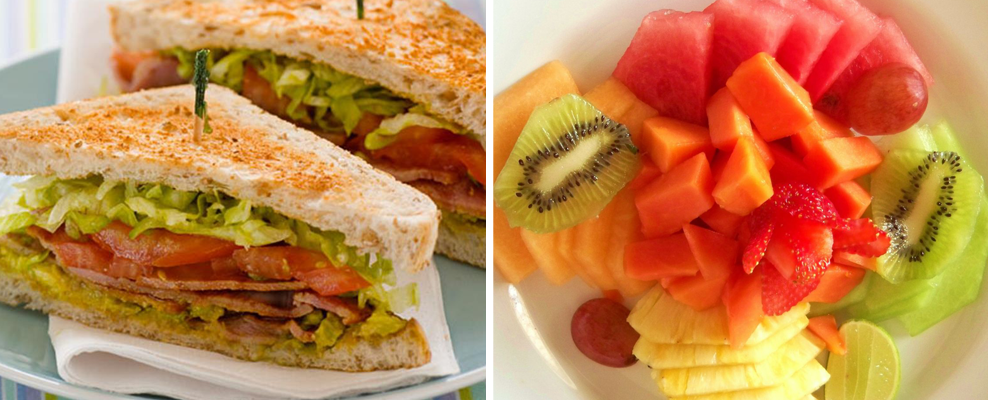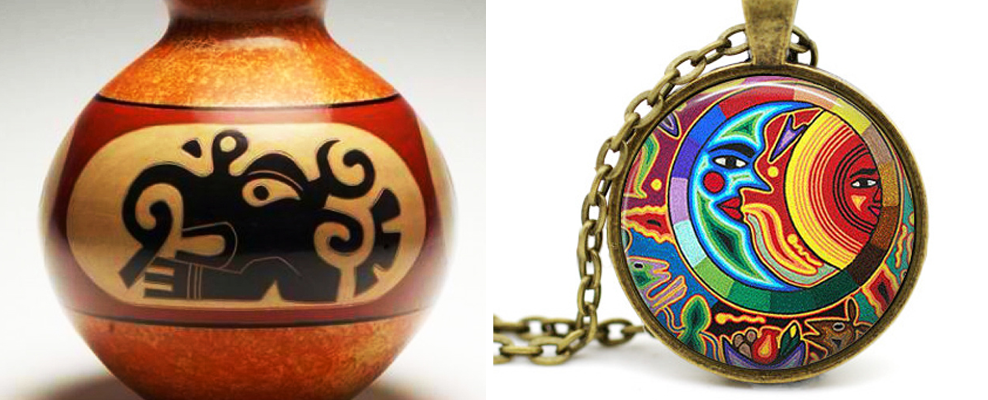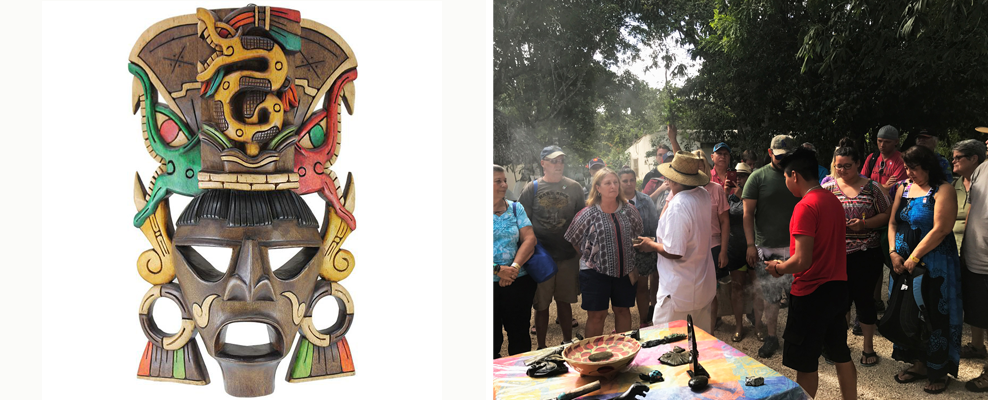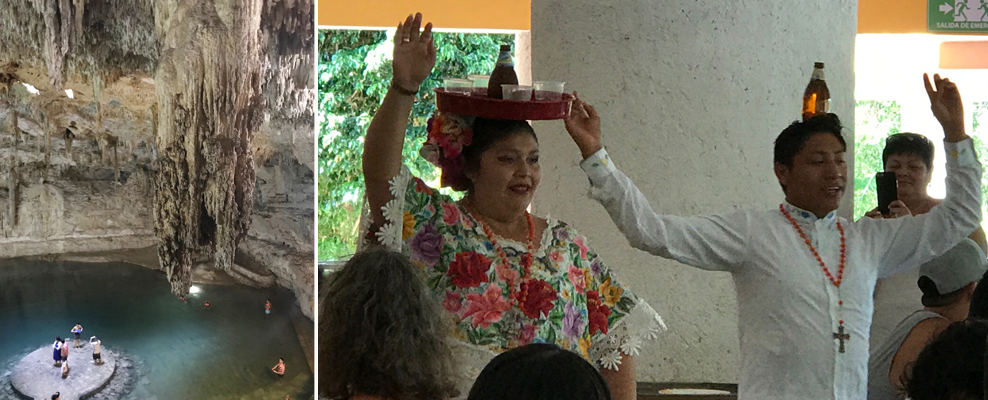The reason for our recent trip to Mexico was to visit one of the 7 Modern Wonders of the World and a declared Unesco World Heritage Site (1988) – Chichen Itza – located in the Yucatan Region of Mexico. These ancient pyramids had always held a fascination for me; and this trip was to explore the ancient Mayan civilization and its importance to the development of science and technology, culture and religion of a great peoples that suddenly vanished from this area.
The Mayan civilization, had extended through Guatemala and Belize, much of Honduras and El Salvador, and the southeastern states of Mexico including the entire Yucatán Peninsula. In fact, archeologists believe that it even extended all the way to Florida, Georgia and Tennessee and that corn, beans and tobacco came to the Native Americans from trading with the Mayans.
We decided to stay at the Mayan Palace, part of the Vidanta Resorts at Playa del Carmen, a 45 minute drive from the Cancun airport. The resort itself is over 1,000 acres, dotted with pristine pools and bordered by a beach on the Atlantic Ocean. There are more than 15 excellent bars and restaurants, a Jack Nicklaus-designed golf course, splendid spa services, and fantastic entertainment, including access to Riviera Maya’s resident Cirque du Soleil show − JOYÀ.

On the day of our tour to Chichen Itza, we set our alarms for 5.15 am as we had to be collected in our elongated electric cart or ‘trains’ as they are called, to arrive at the main check-in area where a large Cancun Bay Tours bus awaited us. At 7.10 am we left for our first stop arriving a couple of hours later for a quick breakfast of a sandwich, coffee/juice and fruits provided to us at a local tourist restaurant on route.
Our tour guide David was an excellent communicator and kept us amused and entertained throughout the trip imparting some interesting tit-bits about the Mayan culture and civilization unknown to most of us. For example, it was believed that the Mayans developed the concept of ‘zero’ as early as 36 BC and a number system based on base 20 (and, to some extent, base 5), probably originally developed from counting on fingers and toes. The numerals consisted of only three symbols: zero, represented as a shell shape; one, a dot; and five, a bar. There is evidence of their working with sums up to the hundreds of millions, and with dates so large it took several lines just to represent them. The genius of the Mayans is that despite not possessing the concept of a fraction, they produced extremely accurate astronomical observations using no instruments other than sticks, and were able to measure the length of the solar year as well as the length of the lunar month. When asked about the Mayan empire, we were informed that they would not be considered as an ‘empire’ as they were but a collection of autonomous city-states with individual rulers who were in frequent communication with other city-states in their region.
We discovered that the Mayan were ‘star gazers’ and studied these celestial bodies, keenly observing and mapping the movements of the sun, moon, planets and stars. These celestial objects were incorporated into a complex cosmology and mythology that explained the past and predicted the future. Thus Chichen Itza and numerous other important Maya temple-cities were positioned according to a regional sacred geography practiced by the placement of their temple-cities at specific sites that mirrored the positions of various celestial objects observed in the night sky.
Our guide added other little tit-bits including the fact that although stories of paper production tend to center around its beginnings in China or Egypt, Pre- Columbian Mayans developed their own system of paper production and use completely independent of these far-away societies. Paper was made (around 500 AD) from the inner bark of fig trees – and in some cases, considered it so precious as to be sacred.

Artifacts discovered at the ruins indicate that the Mayan were also highly skilled potters, weavers, sculptors and jewelers. They developed an extensive trade network through the jungles and along the eastern and western coasts of Yucatan and Central America. Through these trade networks they were able to obtain resources from distant areas such as obsidian from central Mexico and gold from Central America.
As we continued driving through a small Mayan village, David explained to us about the present day Mayan descendants who still manage to integrate their old beliefs while living with modernized practices. Like many, these modern Mayans struggle for survival and fight for their rights.
In 2012, thousands of doomsday theorists visited Chichen Itza as this was the end of the Mayan calendar and they mistakenly assumed that what this meant, was that the world was coming to an end. However, in Mayan culture there is no ‘end’ per se to anything as they believe in the ‘circle of life.’ That when something ends, another begins!

Once we arrived at the village a large shed had been opened up for sale of Mayan artifacts and crafts. Before we entered the place, the village shaman undertook a purification ceremony following which they explained the Mayan alphabet and showed us the pure silver cartouches made of specific names. Large masks, jewelry, lava rocks for massages and other art and crafts were on display which a number of us purchased.

Once these transactions were completed we were escorted down to the ‘cenote’ − a natural pit or sinkhole, resulting from the collapse of limestone bedrock that exposes groundwater underneath. We swam in the cenote for over an hour and once we dried off and changed back into our clothes, we were driven for our lunch.

Lunch was organized at a large semi-open restaurant with a buffet-style meal of soup and salad, chicken, pork and vegetable n meat tacos, spaghetti with tomato sauce, sautéed vegetables and mixed cocktails. The meal was accompanied by Mexican dancers, dancing with beer bottles on their heads and twirling frantically across the floor, where we sat agape, marveling at their dexterity and equipoise.
Once lunch was concluded we were shepherded back on the bus and made our way to Chichen Itza at last.
